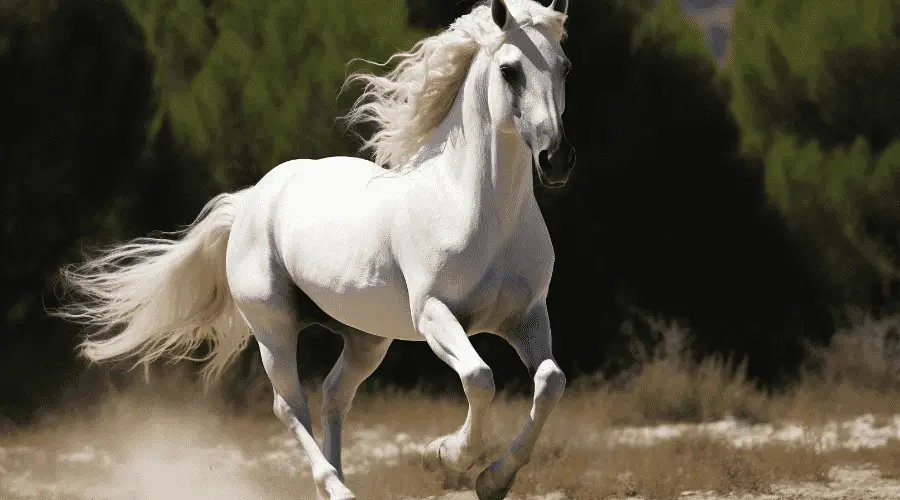The brook horse, a mystical creature of folklore and mythology, has captivated the human imagination for centuries. Known by various names across cultures, including “kelpie” in Scotland and “Näck” in Sweden, the horse often appears in legends as a shape-shifting water spirit that lures unsuspecting travelers to their doom. In this blog post, we will explore the rich tapestry of stories and beliefs surrounding the brook horse, shedding light on its origins, characteristics, and cultural significance.
The Brook Horse Geraldine Brooks’ “Year of Wonders”
Before delving into the world of folklore, let’s briefly touch upon the mention of the brook horse in literature. In Geraldine Brooks’ novel “Year of Wonders,” the brook horse is symbolically referenced. While it may not be the primary focus of the story, its presence hints at the enduring allure and mystery of this mythical creature.
The Origins of the Horse by Geraldine Brooks
The brook horse has roots in various cultures and is often associated with bodies of water such as rivers, lakes, and streams. In Scandinavian folklore, the Näck is a malevolent water spirit known for its musical talents and ability to drown those who are lured by its haunting melodies. In Scotland, the kelpie is depicted as a shapeshifting horse that can transform into a beautiful woman to entice travelers before returning to its equine form to drag them beneath the water’s surface.
These stories raise intriguing questions about the origins of the horse myth. Were they born from ancient encounters with wild horses by the water’s edge? Or did they emerge from a collective fear of the dangers lurking beneath the surface of seemingly tranquil bodies of water?
Must Read: 10 Interesting Facts About Grulla Horses
Characteristics of the Brook Horse
The brook characteristics vary depending on the cultural context in which it appears. In some legends, it is a horse with seaweed-like hair and eyes that gleam like moonlight on water. In others, it is a captivating woman who lures victims with her beauty. What remains consistent, however, is the brook horse’s ability to manipulate its appearance and draw unsuspecting humans into its realm.
The brook horse is often portrayed as a malevolent creature, but some legends suggest a more complex nature. In Scandinavian folklore, the Näck is not always malicious; sometimes, it merely wishes to be left alone and will reward those who respect its space with musical gifts.
Cultural Significance
The horse significance extends beyond its role as a cautionary figure in folklore. It serves as a symbol of the mysterious and unpredictable forces of nature, particularly water. Bodies of water have always held a profound significance in human culture, representing life, renewal, and, at times, danger. The brook horse embodies these dualities, reminding us of the beauty and peril that can be found in nature.
In some cultures, the horse is seen as a guardian of water sources, ensuring their purity and protecting them from harm. In this role, it becomes a symbol of conservation and respect for the environment.
Must Read: Can Horses Swim? What Do You Think?
Evolution of the Brook Horse in Contemporary Culture
While the brook horse may have originated in ancient folklore, its influence can still be seen in modern literature, art, and popular culture. Contemporary authors, such as Geraldine Brooks, occasionally incorporate elements of the myth into their works, adding depth and intrigue to their storytelling.
Additionally, the brook’s enduring allure has led to its inclusion in fantasy novels, role-playing games, and visual arts. It continues to inspire creative minds and serves as a reminder of the timeless appeal of mythical creatures.
Conclusion
The brook horse, with its enigmatic and multifaceted nature, remains a captivating figure in the world of mythology and folklore. Across cultures, it has symbolized the power and mystery of water, offering both warnings and lessons about the natural world. Whether encountered in ancient legends or contemporary literature, the horse’s enduring presence reminds us of the enduring human fascination with the mystical and the unknown. As we continue to explore and preserve the natural world, the brook horse stands as a poignant symbol of our complex relationship with nature and the mysteries it holds.
Must Read: The Horse Soldier Bourbon Story and Gettysburg Connection
FAQs
Are brook horses always portrayed as malevolent creatures?
No, brook horses are not always depicted as malevolent. While some legends portray them as dangerous water spirits, others suggest a more complex nature. In Scandinavian folklore, for instance, the Näck can be both malevolent and benevolent, depending on circumstances.
How do you protect yourself from a brook horse encounter?
To protect yourself from a potential brook horse encounter, it’s advisable to exercise caution near water bodies and avoid approaching unfamiliar horses or individuals near the water’s edge. Respecting the natural environment and heeding local warnings can also reduce risks.
Are there variations of the brook horse myth in different regions?
Yes, there are variations of the brook horse myth in different regions. For example, the Scottish kelpie and the Scandinavian Näck have distinct characteristics and stories, illustrating the diversity of this folklore across cultures.
Can the brook horse be a symbol of environmental conservation?
Yes, in some cultures, the brook horse is seen as a guardian of water sources. This symbolic role can highlight the importance of environmental conservation and respecting natural water bodies.
What is the significance of the brook horse’s shape-shifting abilities?
The brook horse’s shape-shifting abilities serve as a warning of the danger that lurks beneath the surface of water. Its ability to transform into a captivating form, such as a beautiful woman, reinforces the idea of the enticing yet treacherous nature of water bodies in folklore.
You May Also Like:
